This time I have something from outside Vienna, but not very far from my home base. The Fine Art Galerie in Traismauer, Lower Austria, just about an hour from the city, just opened a new art exhibition titled “Magic and Illusions“. I went to the opening night, expecting a regular photo exhibition, and found myself surprised. As I took a closer look, I realized that something about many of these images was different. What Jutta Fischel, the exhibition curator, has put together here is a collection of pictures that in several instances go beyond the “regular” photographic frame of reference. To be sure, photography is the basis of many artworks on display here, but the exhibition also includes works that look like photos, but upon closer inspection, turn out to be a combination of images that have been “processed” in one way or another.
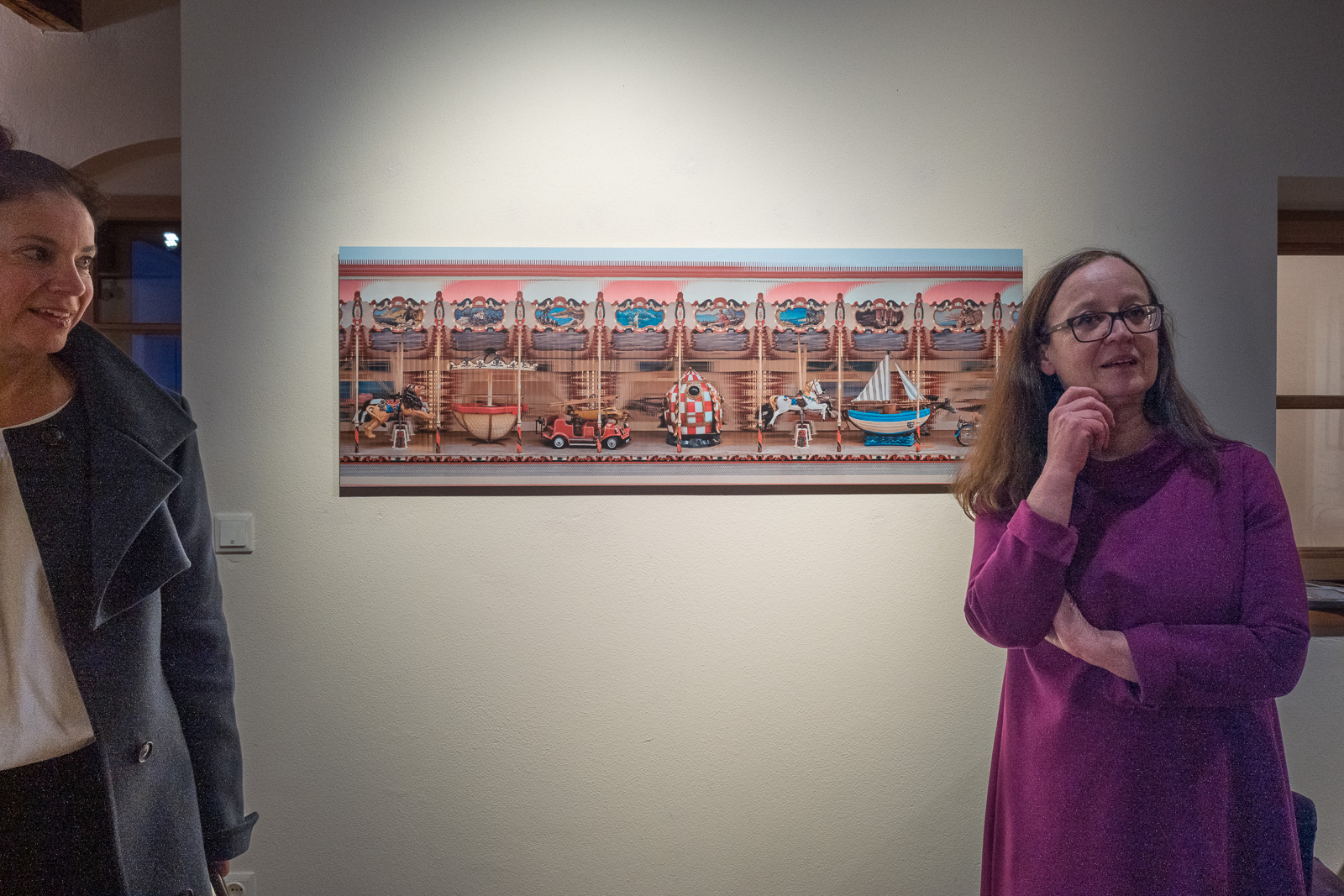
Of course, as photographers we always “process” what comes out of our cameras. But here we are talking about something quite different. A picture I loved, of a carousel, by Konrad Stania was actually composed of stitched together video stills, with incredibly crisp and sharp details.
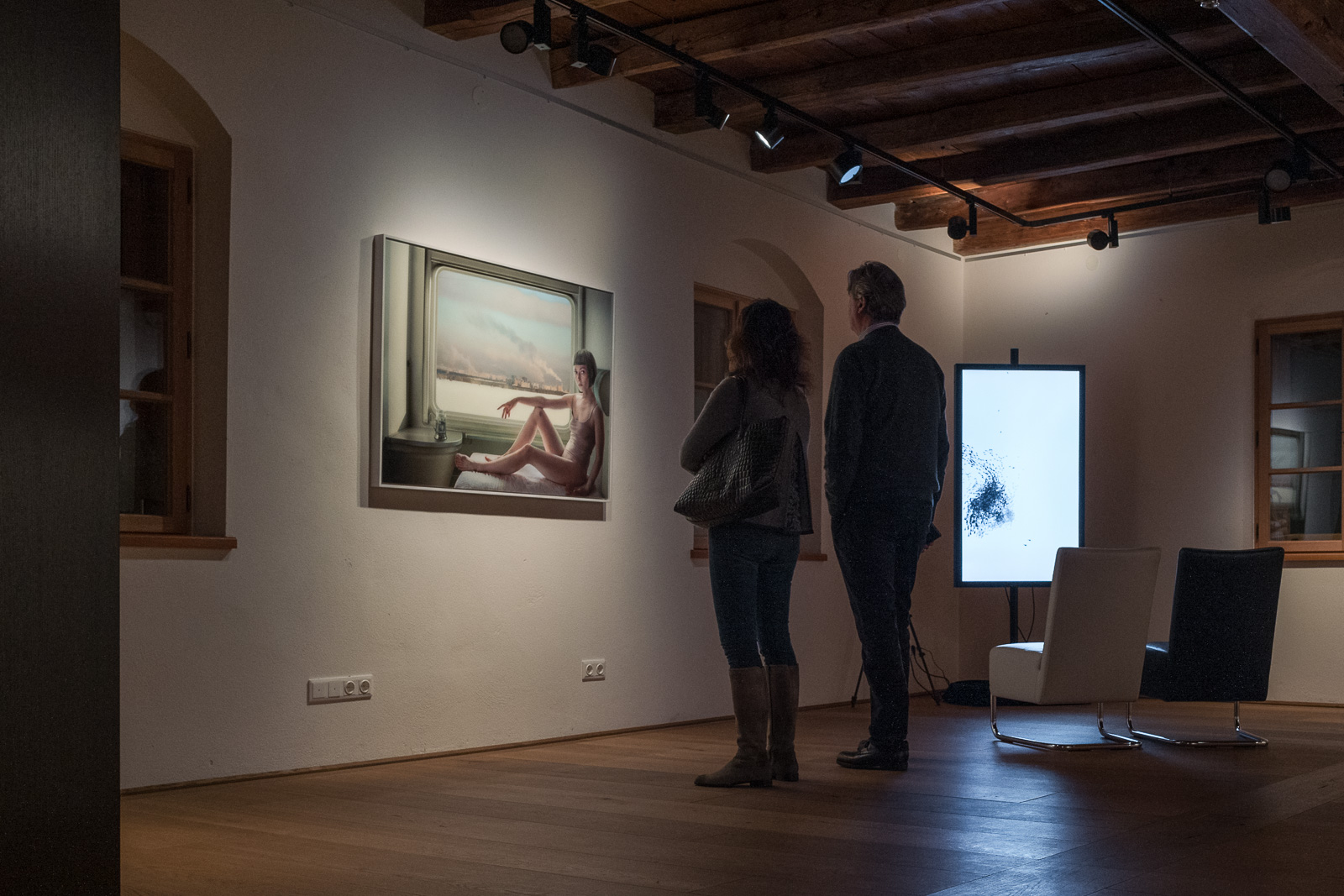
Another fascinating picture, TheFlight.Poezd by Katerina Belkina, shows a woman lounging on what appears to be a bed in a train, with an industrial landscape visible beyond the window — it turns out to be several photos put together to create a surreal seeming scene. There are many other creative photo projects, ranging from analog processes to artworks created through artificial intelligence.
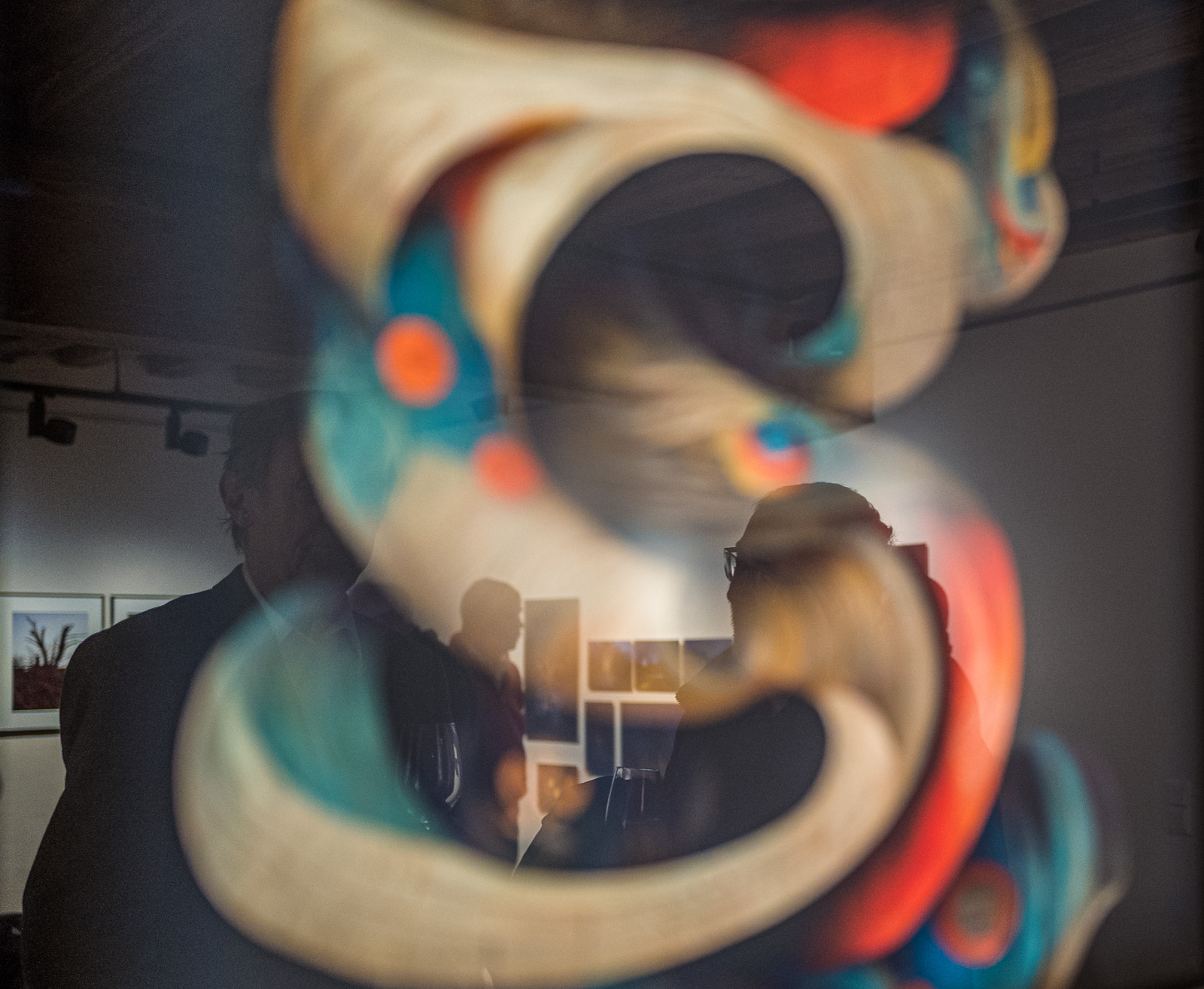
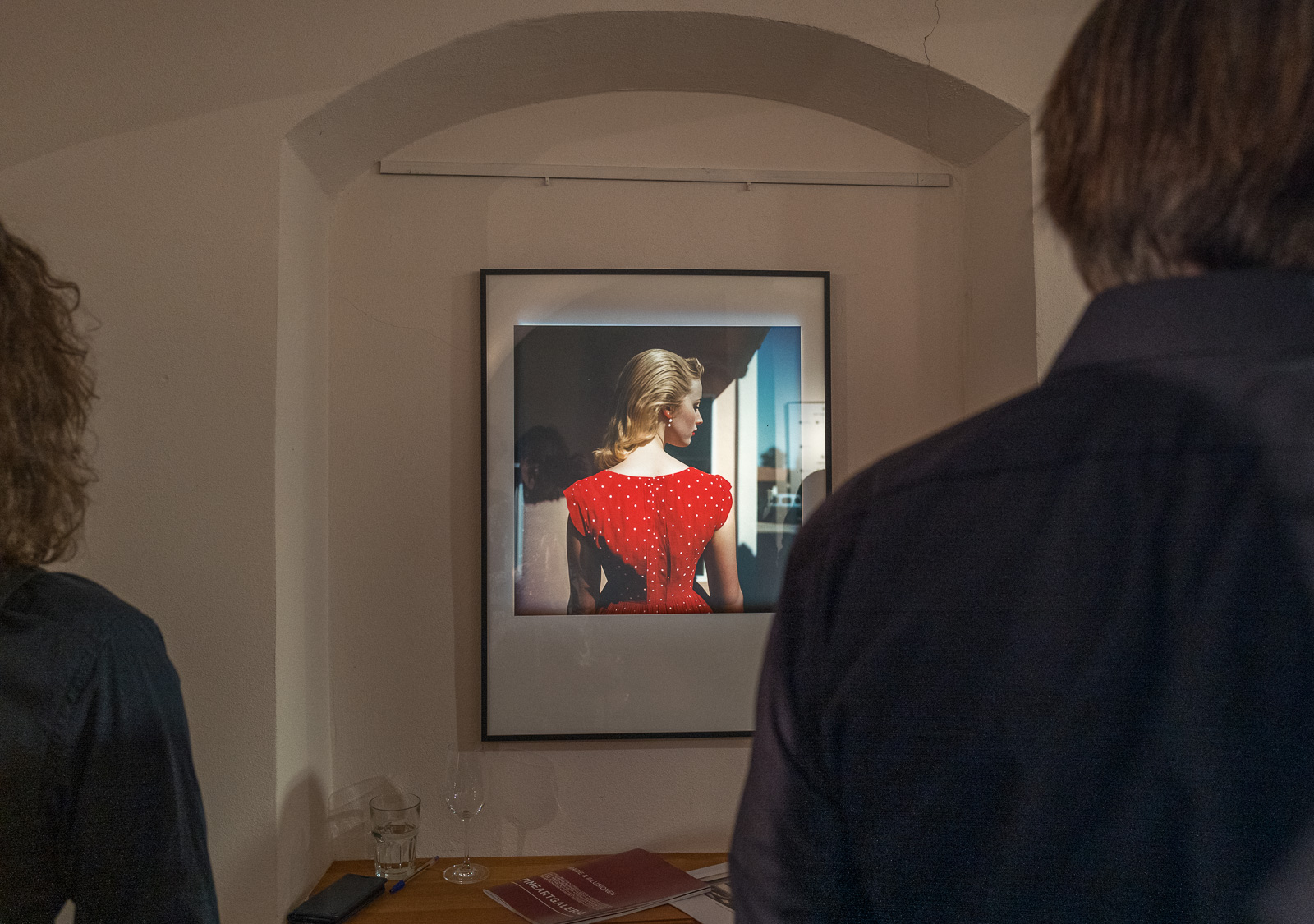
One of the highlights of the exhibition was a series of AI-generated images, one a realistic-appearing portrait by Martin Dörsch, another a beautiful work of colourful abstract shapes by Friedrich Poyer. The images were created using machine learning algorithms, which follow human prompts to create unique works of art. This type of images has been generating a lot of interest and discussion lately, and I was surprised to see these quite different examples in the exhibition.
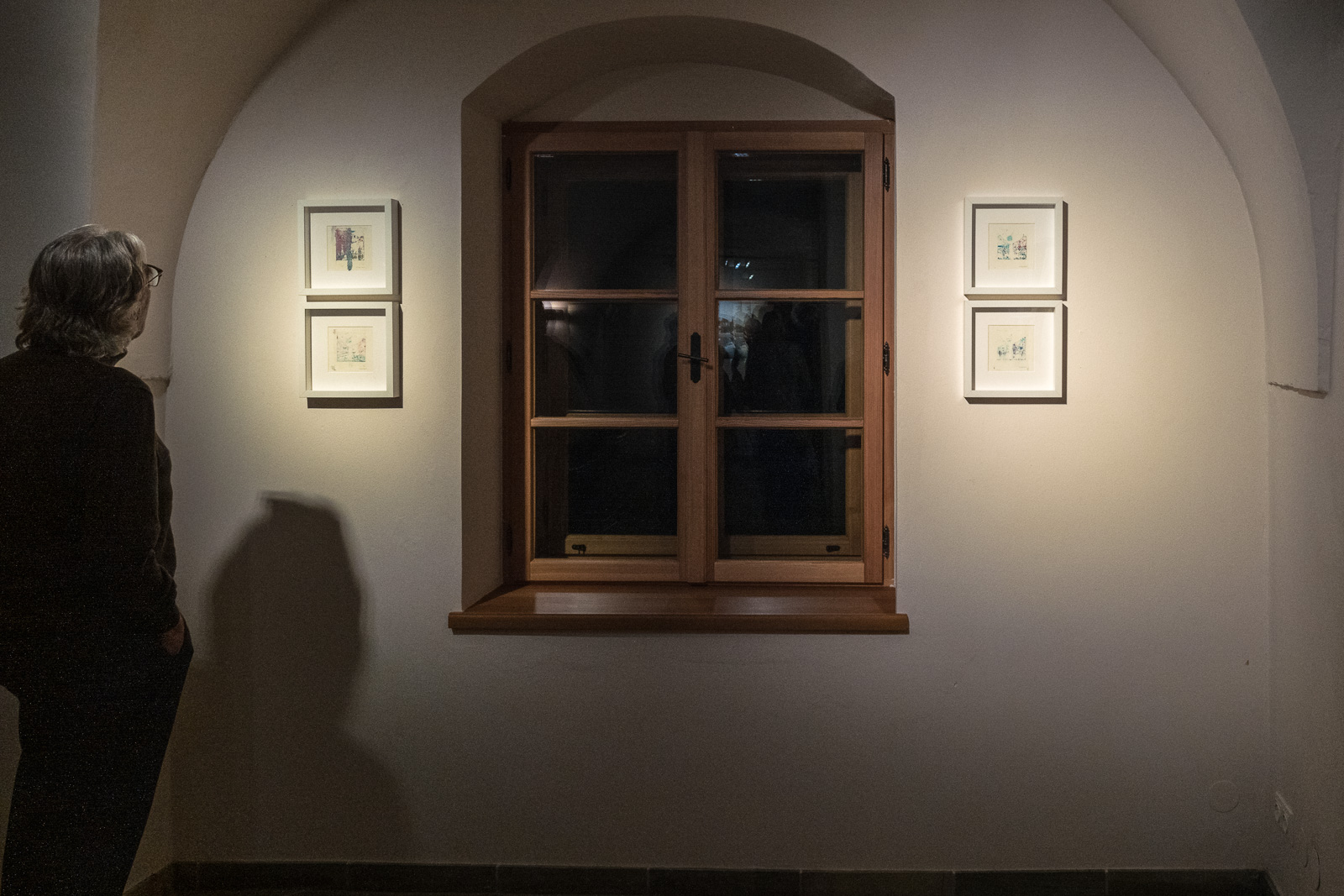


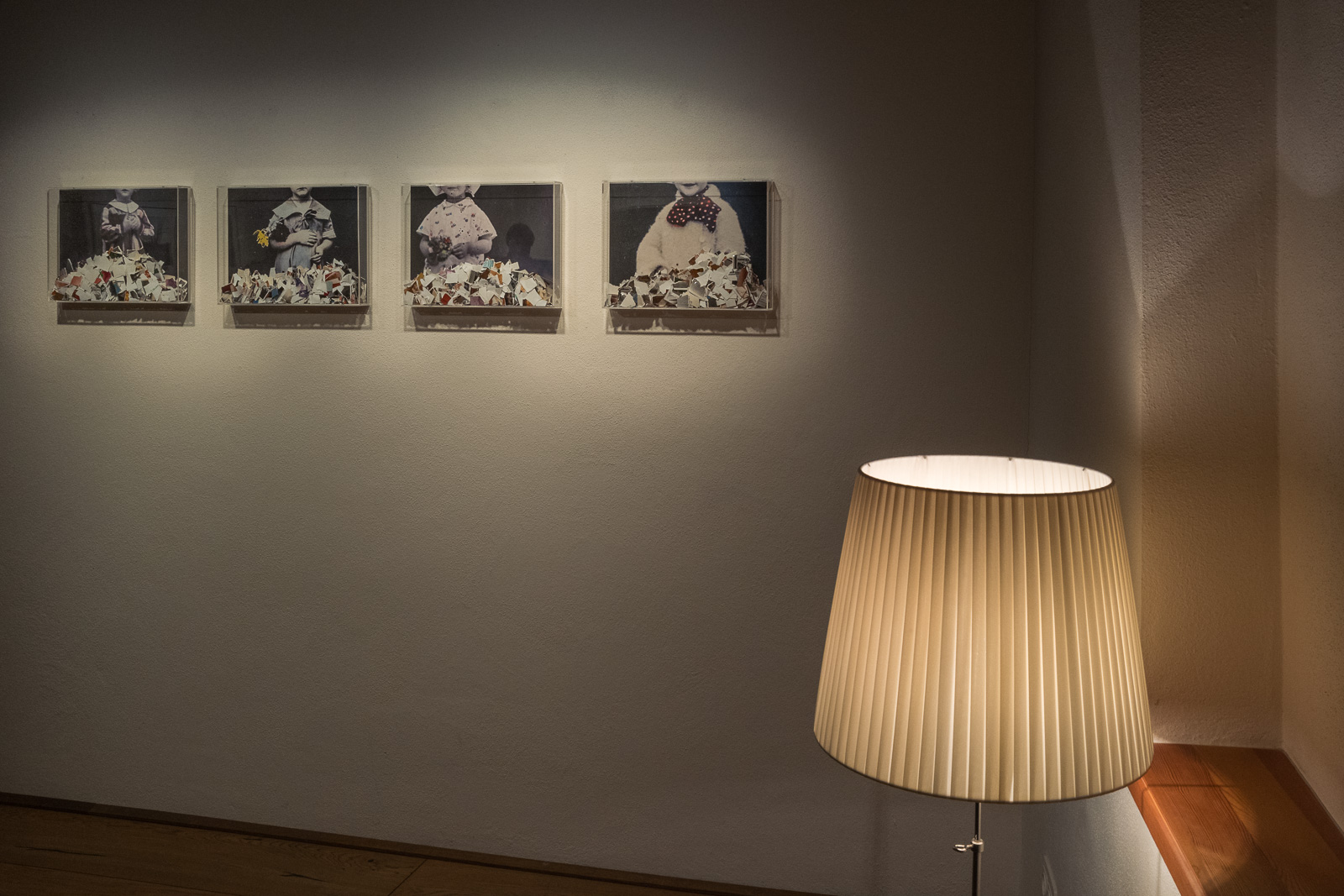
In some artworks on display here, the artists are dealing with personal difficulties and experiences. Uli Altmüller´s series “Dissolution” (Auflösung) is a way of translating a difficult separation into art through the separation of layers of polaroids into ever more fading prints. The glass boxes with torn-up photos may have been a way for the artist to explore their own personal history and memories. In “Summer cancelled” artist Adrienn Józan deals with a period of illness.
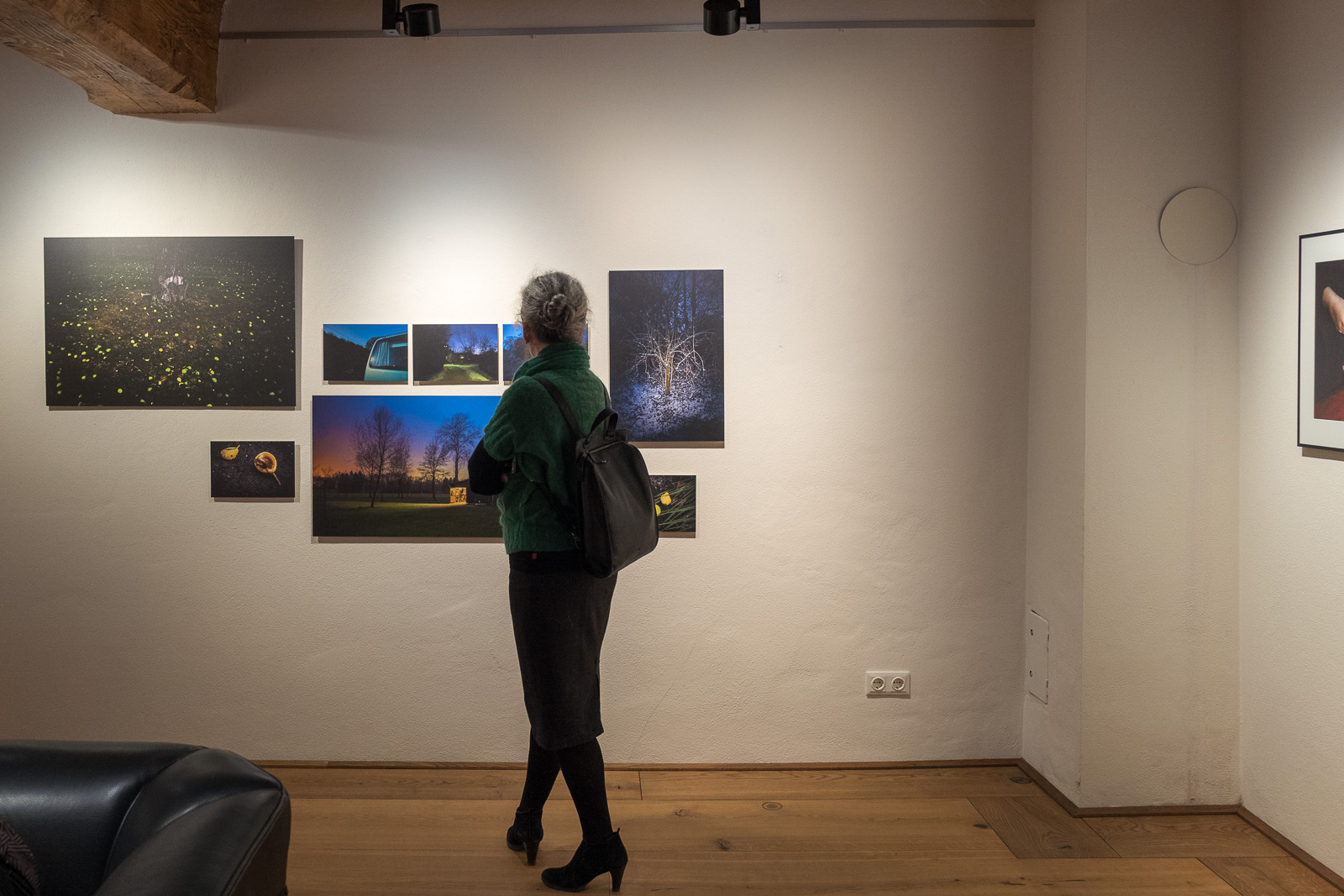
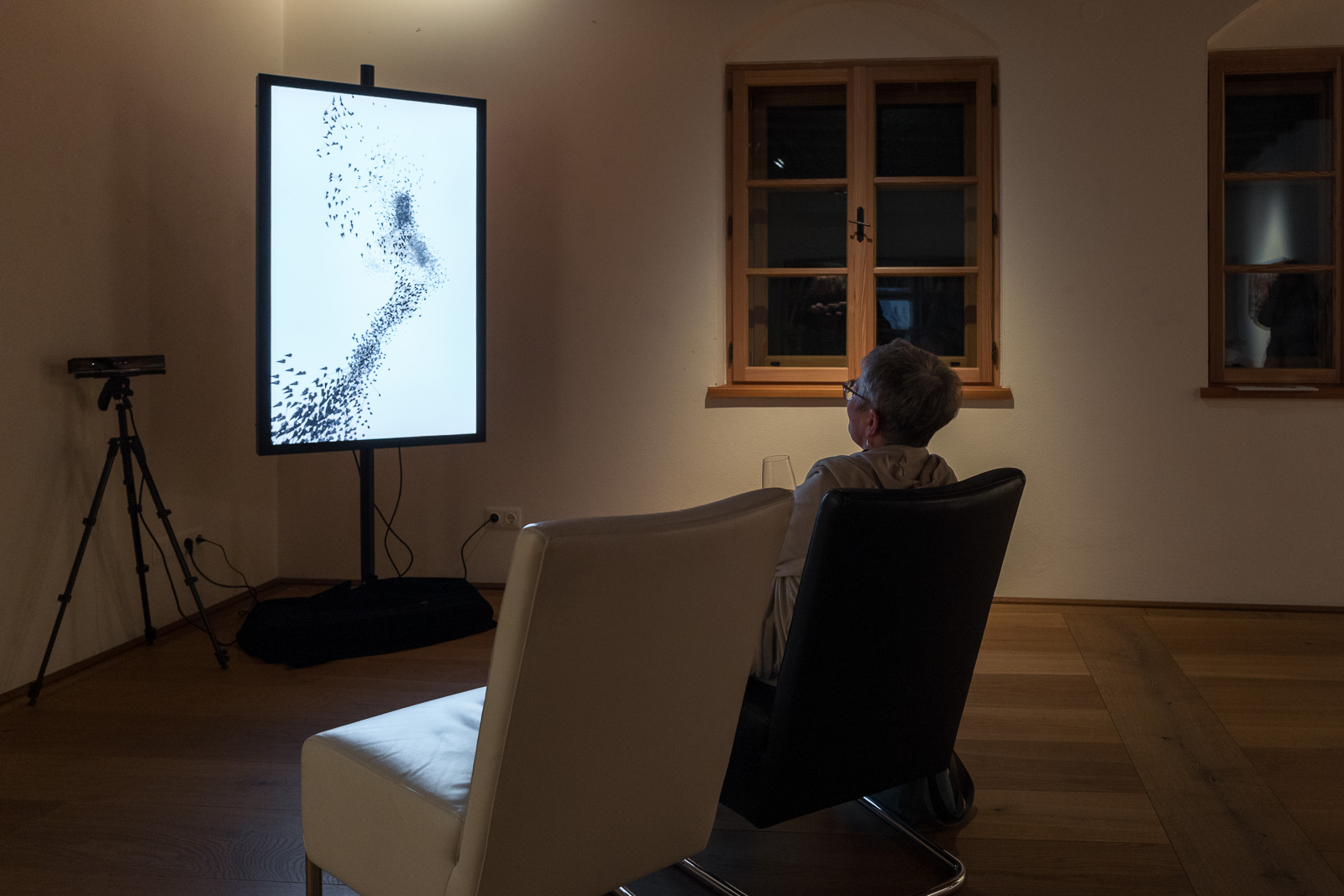
Another work that caught my attention was a video installation with bird sound that mimics the murmuration of birds in the sky, a natural phenomenon I have been fortunate enough to admire in nature. Here though swarming patterns were created through an algorithm that simulate the behaviour of birds in flight, resulting in a mesmerizing and complex visual display.
The exhibition is a testament to the power of art and technology coming together. It showcases a wide range of unique, imaginative, and sometimes surprising works, designed to challenge the viewer’s perception and spark their imagination. Some works are playful, while others are thought-provoking. The exhibition curator Jutta Fischel evidently took care to put together an exhibition that draws the viewer in and engages and promotes dialogue.
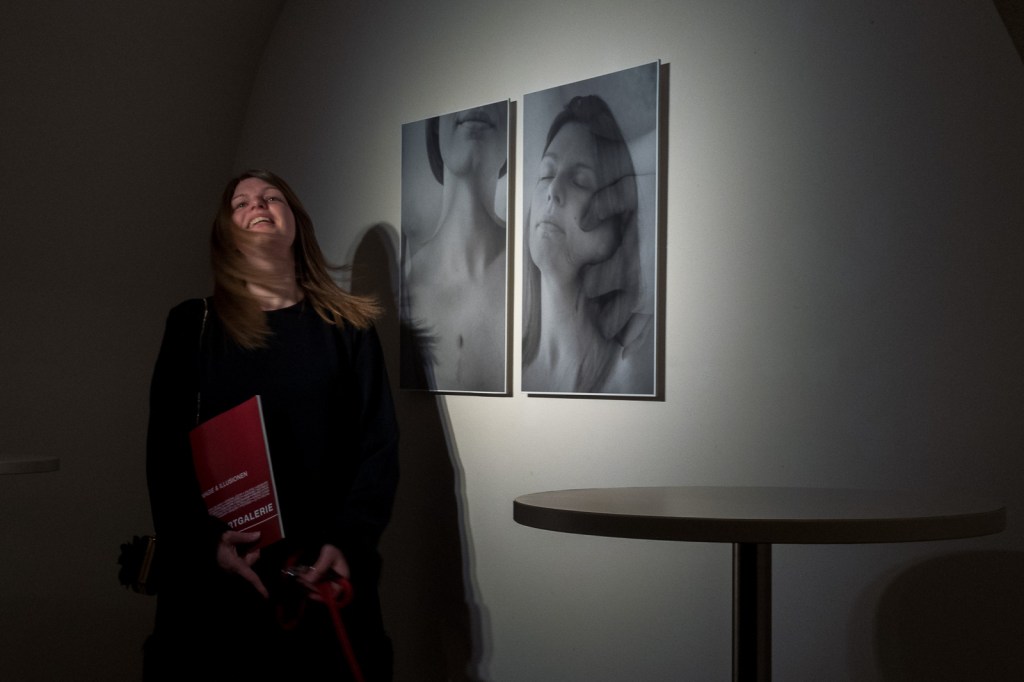
Perhaps the most magical object in this exhibition, to me anyway (since I have lately become re-enamored with analog processes) is an installation that takes us back to the early days of photography: a giant camera obscura, conceived by Jutta Fischel and designed by Bernhard Schneider. The term means dark chamber, and this is literally what is standing in the gallery´s yard at the moment. Step through the door, and you can see nothing at first, except for a few circles on the wall where light comes in through the holes drilled into the walls. But once you sit in the room for some minutes and your eyes have adjusted to the dark, the magic starts happening: you begin seeing a blurry projection of the surrounding yard, ghostly and upside down. It is amazing how the human eye can adjust to darkness and begin to pick up subtle details that would otherwise go unnoticed. My camera sensor could too. My cover image above is one I took inside the box at only 800 ISO with a very open aperture and then processed fairly heavily to lighten it up – you can see the fascinating (upside down) shadows of the building across from the box.
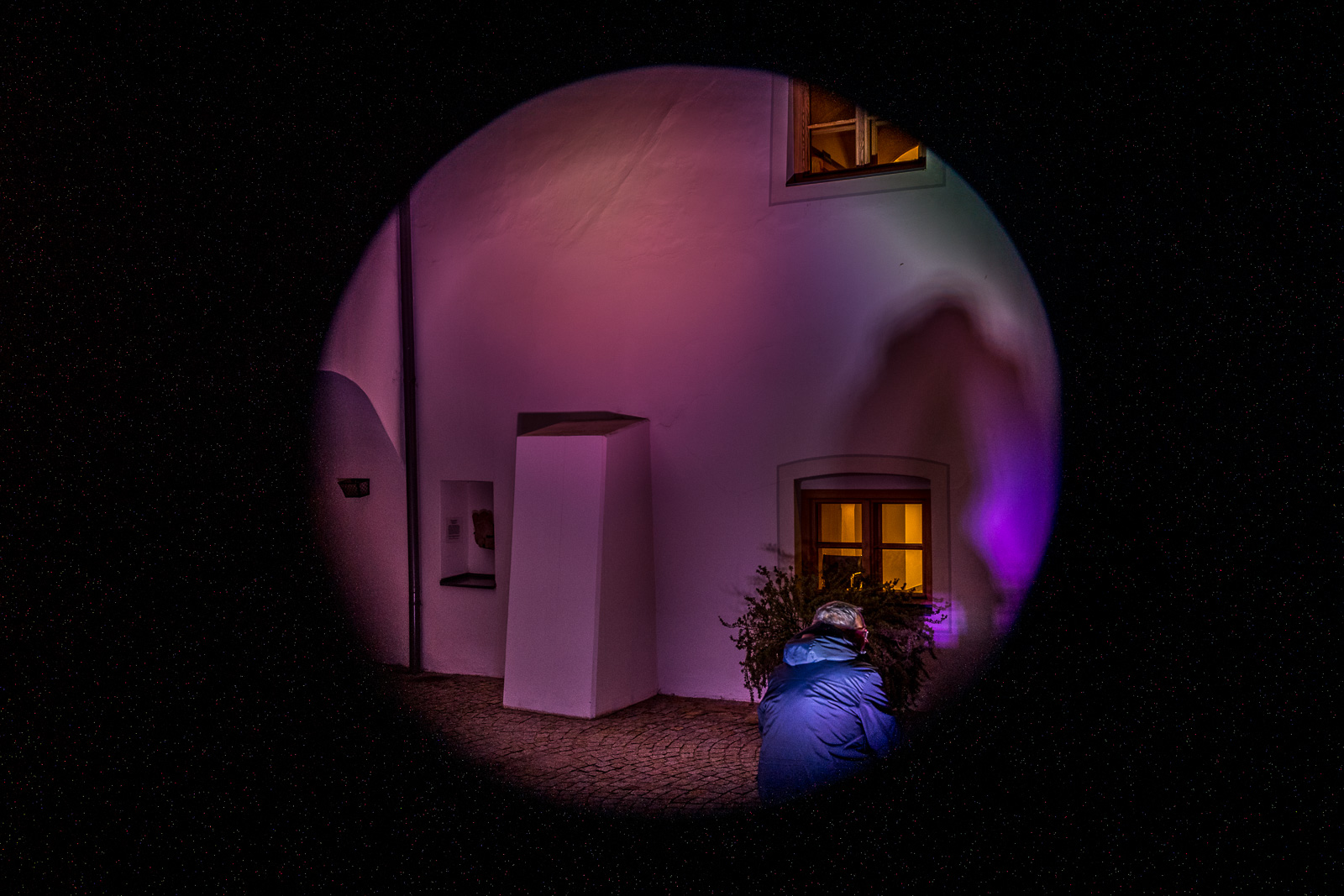
It is fascinating to think that this technology, which dates back to ancient times, is still able to inspire wonder and awe today. By using a darkened chamber to project an image of the surrounding environment, this installation creates a sense of magic and mystery. The fact that the camera obscura was built with the help of the entire gallery team also adds a layer of community and collaboration to the exhibit. It’s wonderful to think that this piece of art was created through a collective effort. It is also a wonderful example of how such an old technology can still inspire curiosity, wonder, and a renewed appreciation for analog processes.
In conclusion, “Magic and Illusions” is an extraordinary exhibition that challenged and expanded my understanding of what photography can become when it is taken beyond its classic frame of reference, through artistic creativity and through technology. By combining different elements and mediums the Fine Art Gallery has created a unique and thought-provoking experience for the viewer. It also highlights the use of technology and algorithmic processes in contemporary art. It is a celebration of creativity, imagination, and the possibilities of technology, all coming together to create something truly magical.
What you are seeing is not always what you think you are seeing.
The exhibition features works by:
Katerina Belkina, Adrienn Józan, Valerie Habsburg, Markus Kupferblum, Martin Dörsch, Daniela Köppl, Michael Heinzle, Benedikt Pfisterer, Sascha Mann, Melanie Johanna Pichler, Uli Altmüller, Friedrich Poyer, Margaret Westreich, Bernhard Schneider, Konrad Stania, and Jutta Fischel
You can see the exhibition at Fine Art Galerie on the following dates: Open today, Sunday, February 19th 2:00 p.m. – 6:00 p.m, Saturday, February 25th and Sunday, February 26th 2pm – 6pm, thereafter until April 10th by appointment. See more details on the gallery website.
My photos from the opening night of the exhibition were taken with Leica Q and an ISO setting of 800.

ALL PHOTOS © KARIN SVADLENAK-GOMEZ

[…] the giant camera obscura in the yard of the Fine Art Gallery, which also features prominently in a previous blog post, taken with my digital Olympus EM5 Mark III at 1000 ISO (and not turned around – the image is […]
LikeLike